Abstract
Pima County, Ariz., is currently investigating the potential benefits of land application of sewage sludge. To assess risks associated with the presence of pathogenic enteric viruses present in the sludge, laboratory studies were conducted to measure the inactivation rate (k = log10 reduction per day) of poliovirus type 1 and bacteriophages MS2 and PRD-1 in two sludge-amended desert agricultural soils (Brazito Sandy Loam and Pima Clay Loam). Under constant moisture (approximately -0.05 × 105 Pa for both soils) and temperatures of 15, 27, and 40°C, the main factors controlling the inactivation of these viruses were soil temperature and texture. As the temperature increased from 15 to 40°C, the inactivation rate increased significantly for poliovirus and MS2, whereas, for PRD-1, a significant increase in the inactivation rate was observed only at 40°C. Clay loam soils afforded more protection to all three viruses than sandy soils. At 15°C, the inactivation rate for MS2 ranged from 0.366 to 0.394 log10 reduction per day in clay loam and sandy loam soils, respectively. At 27°C, this rate increased to 0.629 log10 reduction per day in clay loam soil and to 0.652 in sandy loam soil. A similar trend was observed for poliovirus at 15°C (k = 0.064 log10 reduction per day, clay loam; k = 0.095 log10 reduction per day, sandy loam) and 27°C (k = 0.133 log10 reduction per day, clay loam; k = 0.154 log10 reduction per day, sandy loam). Neither MS2 nor poliovirus was recovered after 24 h at 40°C. No reduction of PRD-1 was observed after 28 days at 15°C and after 16 days at 27°C. At 40°C, the inactivation rates were 0.208 log10 reduction per day in amended clay loam soil and 0.282 log10 reduction per day in sandy loam soil. Evaporation to less than 5% soil moisture completely inactivated all three viruses within 7 days at 15°C, within 3 days at 27°C, and within 2 days at 40°C regardless of soil type. This suggests that a combination of high soil temperature and rapid loss of soil moisture will significantly reduce risks caused by viruses in sludge.
Full text
PDF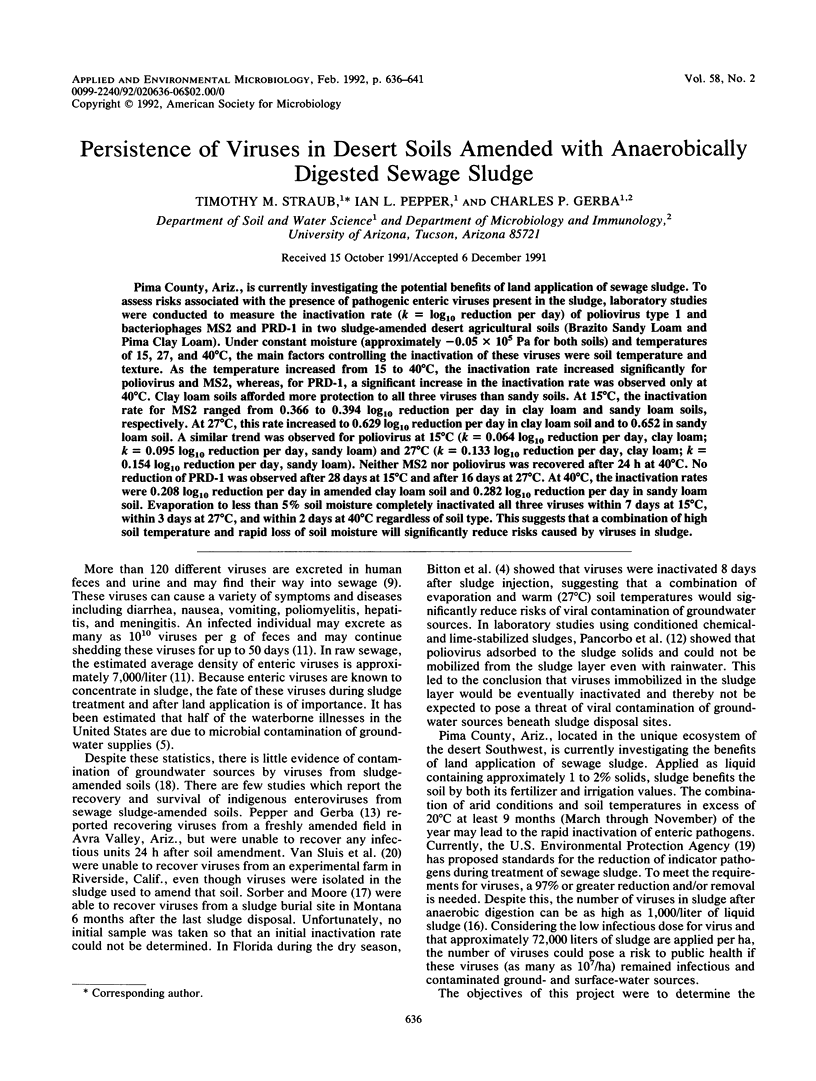
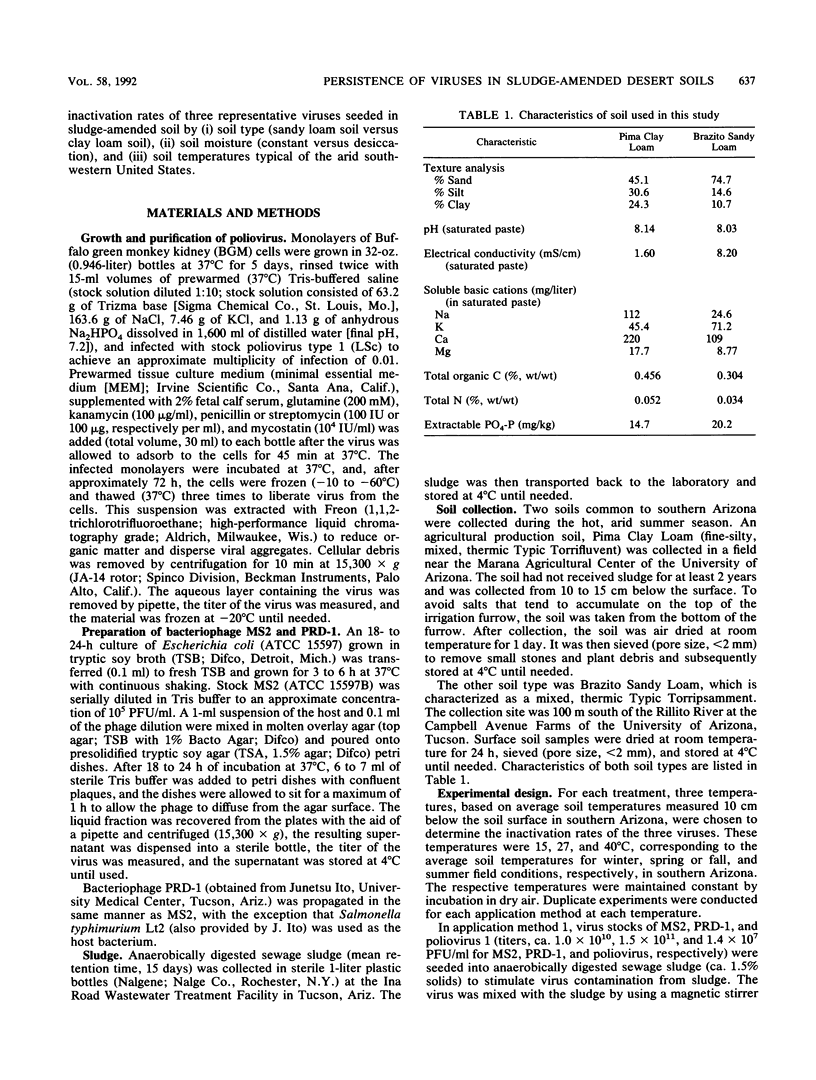
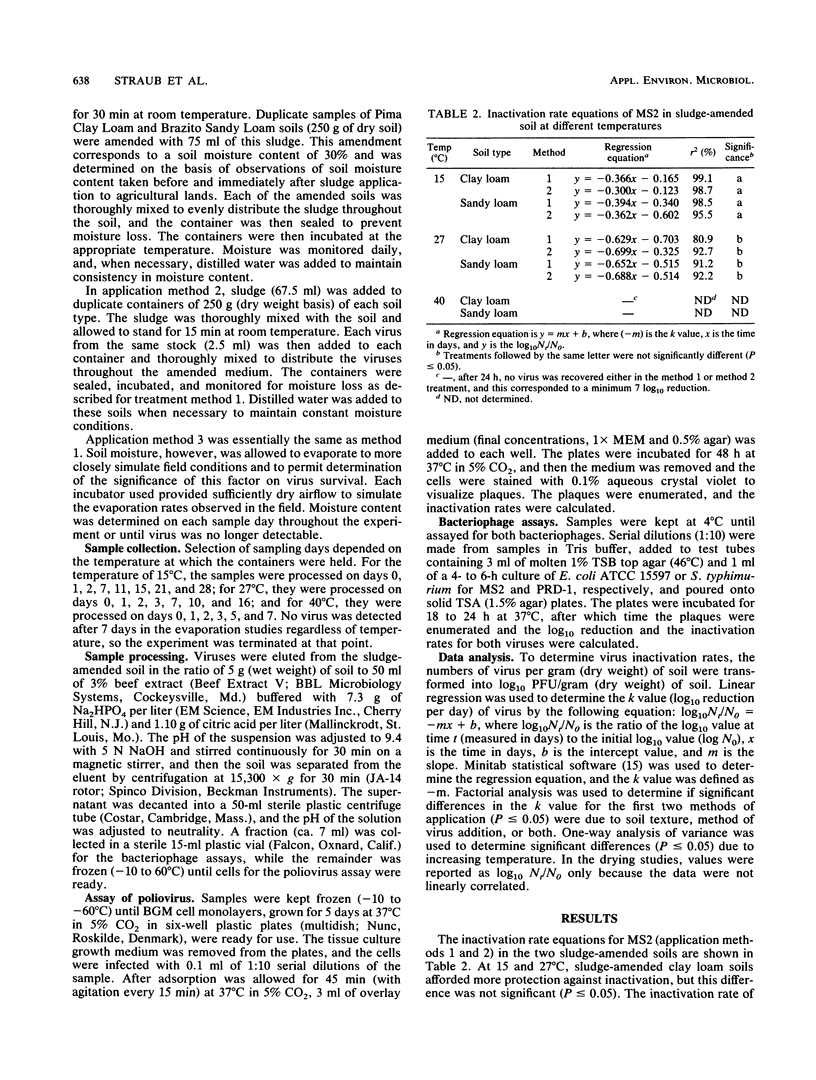
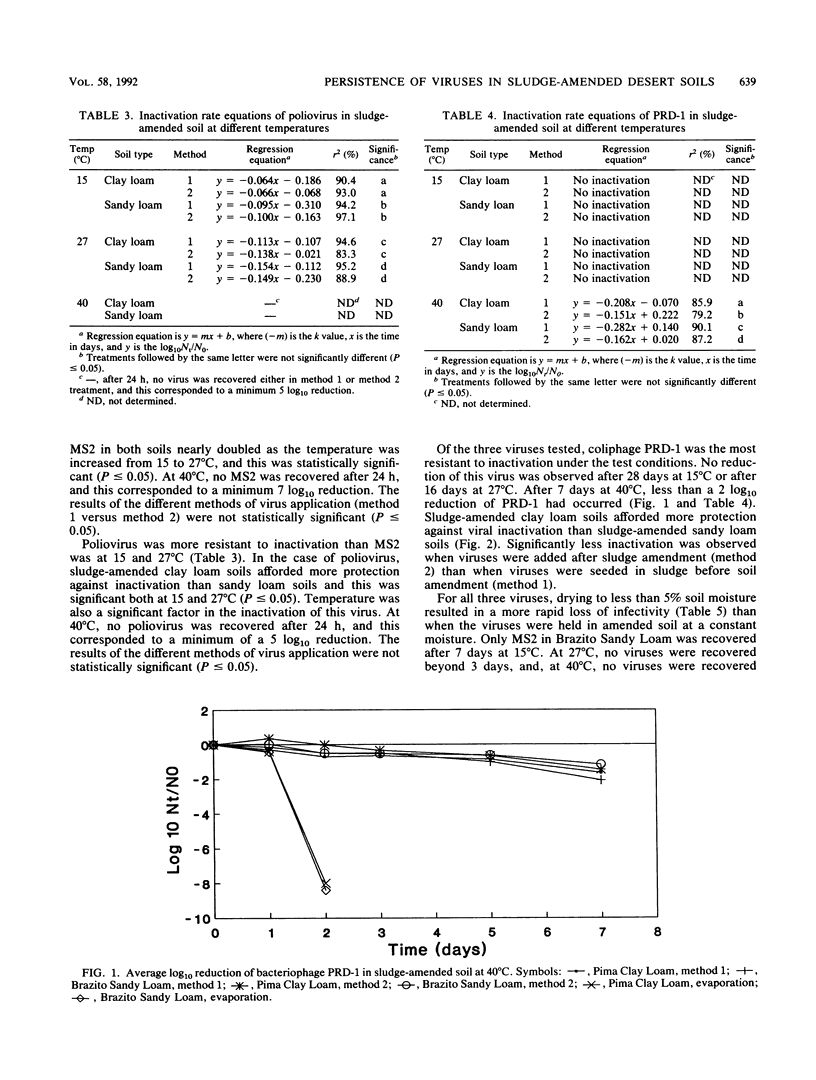
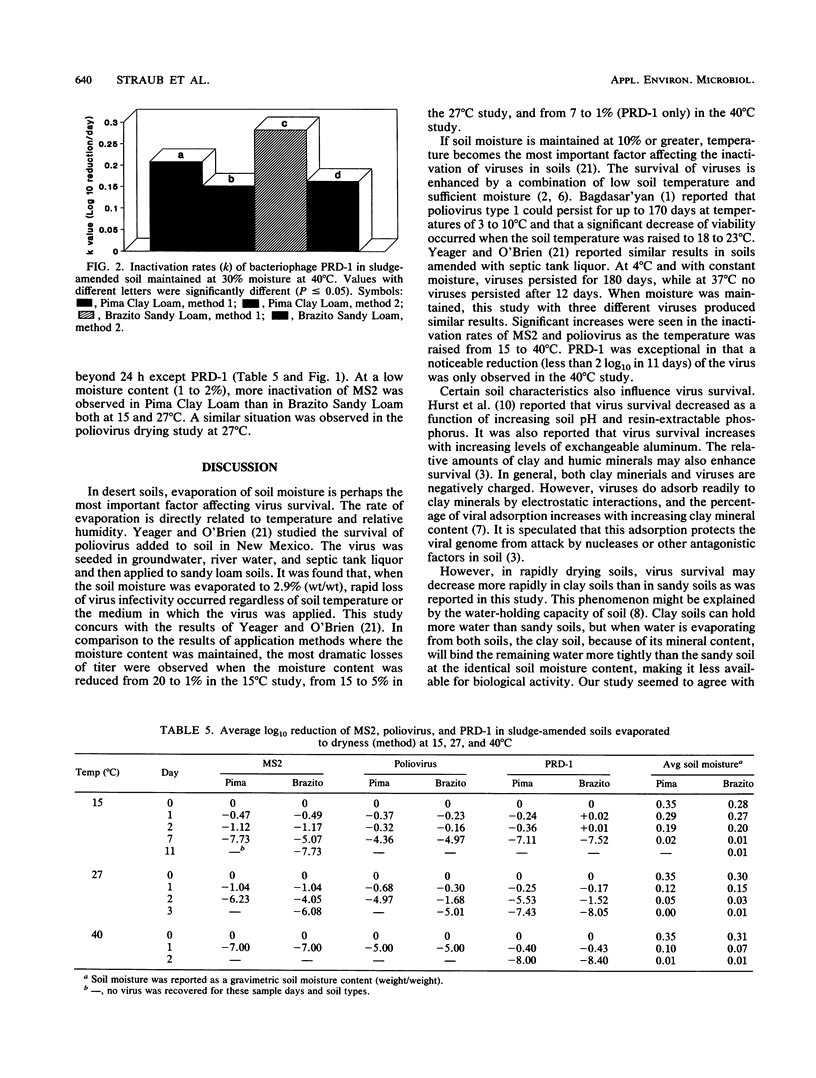
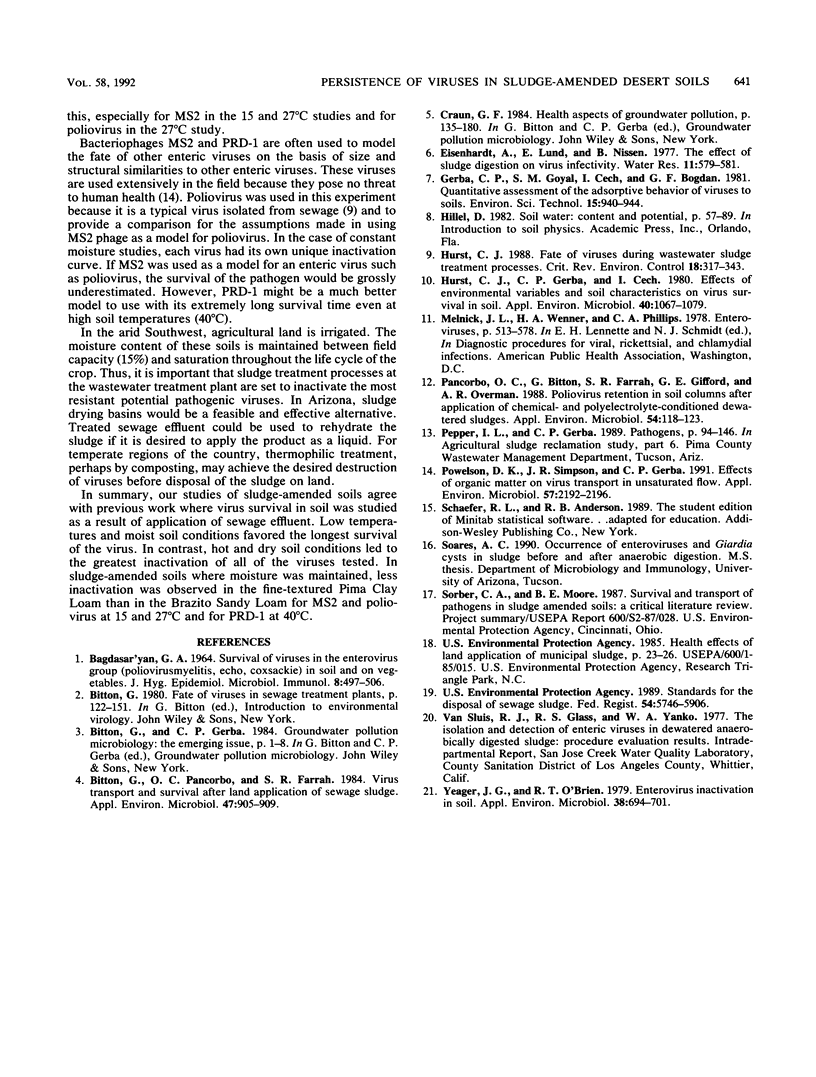
Selected References
These references are in PubMed. This may not be the complete list of references from this article.
- Bitton G., Pancorbo O. C., Farrah S. R. Virus transport and survival after land application of sewage sludge. Appl Environ Microbiol. 1984 May;47(5):905–909. doi: 10.1128/aem.47.5.905-909.1984. [DOI] [PMC free article] [PubMed] [Google Scholar]
- Hurst C. J., Gerba C. P., Cech I. Effects of environmental variables and soil characteristics on virus survival in soil. Appl Environ Microbiol. 1980 Dec;40(6):1067–1079. doi: 10.1128/aem.40.6.1067-1079.1980. [DOI] [PMC free article] [PubMed] [Google Scholar]
- Pancorbo O. C., Bitton G., Farrah S. R., Gifford G. E., Overman A. R. Poliovirus retention in soil columns after application of chemical- and polyelectrolyte-conditioned dewatered sludges. Appl Environ Microbiol. 1988 Jan;54(1):118–123. doi: 10.1128/aem.54.1.118-123.1988. [DOI] [PMC free article] [PubMed] [Google Scholar]
- Powelson D. K., Simpson J. R., Gerba C. P. Effects of organic matter on virus transport in unsaturated flow. Appl Environ Microbiol. 1991 Aug;57(8):2192–2196. doi: 10.1128/aem.57.8.2192-2196.1991. [DOI] [PMC free article] [PubMed] [Google Scholar]
- Yeager J. G., O'Brien R. T. Enterovirus inactivation in soil. Appl Environ Microbiol. 1979 Oct;38(4):694–701. doi: 10.1128/aem.38.4.694-701.1979. [DOI] [PMC free article] [PubMed] [Google Scholar]


